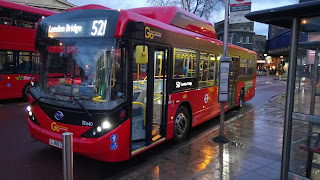The Tokyo Motor Show is back again, allowing mainly the Japanese manufacturers to showcase their latest design thinking in new concepts. Technical details seem a little hard to come-by, so this post is simply a run-down of some of the more interesting visual concepts - giving us hope perhaps, that we may not all be driving (or being driven in) bland homologous shapes.
Honda Sports EV Concept
Hot on the heels of the Urban EV Concept revealed recently at the Frankfurt Motor Show, and teased a few weeks ago, Honda have now revealed their gorgeous Sports EV Concept.
Mitsubishi e-Evolution Concept
In the UK, Mitsubishi had a surprise hit with its Outlander PHEV, helped considerably by tax incentives (now significantly reduced for private buyers, as it's not a pure EV). At Tokyo, a new e-Evolution Concept has been revealed, under the design philosophy of "Robust and Ingenious".
Mitsubishi Electric EMIRAI 4 Concept
Mitsubishi Electric (not to be confused with the automotive brand above which is part of the Renault/Nissan Alliance), revealed a concept called the EMIRAI 4, exploring how connectivity and autonomous features can improve safety, convenience and the environment.
Nissan IMx
Nissan has a worldwide hit with the Nissan Leaf, and with a new model recently launched, no doubt will continue to drive higher sales. They also have innovation coming with some of their vehicle to grid (V2G) initiatives.
At Tokyo, Nissan revealed the IMx EV, which has a planned range of 600km, and can drive fully autonomously, with the steering wheel disappearing into the dashboard. Is this the car which will bring sustainable motoring to the masses?
Suzuki e-SURVIVOR
Back in the 1980's, Suzuki had a near monopoly for small 4WD cars, with the Jimny/SJ413 and Vitara models. The market evolved though, and with SUVs and crossovers the form factors of choice, and 4WD powertrains available from most manufacturers, Suzuki have lost market share. So, as they approach their centenary in 2020, how are they embracing the market for four wheel drive EVs? Well, take a look at this, the e-SURVIVOR:
Yes, it's a slight contrast to the rest of the bunch... but actually could carve out a useful niche for certain applications.
Toyota Concept-i Series
Toyota have been one of the vanguards of powertrain innovation for many years, and if rumours are true from the motor show, their developments in solid-state battery technology and cost-effective hydrogen power, could give them the edge in coming years too.
Alongside some innovative new hybrid-powered designs, Toyota added to its Concept-i Series, with the RIDE and WALK.
Toyota Fine-Comfort Ride
Fuel-celled powered comfort has been provided with Toyota's slightly peculiarly named Fine-Comfort Ride.
Toyota Sora
Another reveal of note was their concept fuel-cell bus, called Sora. We should expect to see an evolution of this concept on the streets of Tokyo during the 2020 Olympics, with an additional application of being an emergency power source in case of natural disaster.
Honda Sports EV Concept
Hot on the heels of the Urban EV Concept revealed recently at the Frankfurt Motor Show, and teased a few weeks ago, Honda have now revealed their gorgeous Sports EV Concept.
 |
| Honda Sports EV Concept |
 | |
|
Mitsubishi e-Evolution Concept
In the UK, Mitsubishi had a surprise hit with its Outlander PHEV, helped considerably by tax incentives (now significantly reduced for private buyers, as it's not a pure EV). At Tokyo, a new e-Evolution Concept has been revealed, under the design philosophy of "Robust and Ingenious".
 |
| Mitsubishi e-Evolution Concept |
Mitsubishi Electric EMIRAI 4 Concept
Mitsubishi Electric (not to be confused with the automotive brand above which is part of the Renault/Nissan Alliance), revealed a concept called the EMIRAI 4, exploring how connectivity and autonomous features can improve safety, convenience and the environment.
 |
| Mitsubishi Electric |
Nissan IMx
Nissan has a worldwide hit with the Nissan Leaf, and with a new model recently launched, no doubt will continue to drive higher sales. They also have innovation coming with some of their vehicle to grid (V2G) initiatives.
At Tokyo, Nissan revealed the IMx EV, which has a planned range of 600km, and can drive fully autonomously, with the steering wheel disappearing into the dashboard. Is this the car which will bring sustainable motoring to the masses?
 |
| Nissan IMx |
Suzuki e-SURVIVOR
Back in the 1980's, Suzuki had a near monopoly for small 4WD cars, with the Jimny/SJ413 and Vitara models. The market evolved though, and with SUVs and crossovers the form factors of choice, and 4WD powertrains available from most manufacturers, Suzuki have lost market share. So, as they approach their centenary in 2020, how are they embracing the market for four wheel drive EVs? Well, take a look at this, the e-SURVIVOR:
Yes, it's a slight contrast to the rest of the bunch... but actually could carve out a useful niche for certain applications.
Toyota Concept-i Series
Toyota have been one of the vanguards of powertrain innovation for many years, and if rumours are true from the motor show, their developments in solid-state battery technology and cost-effective hydrogen power, could give them the edge in coming years too.
Alongside some innovative new hybrid-powered designs, Toyota added to its Concept-i Series, with the RIDE and WALK.
 |
| Toyota Concept-i Series |
Toyota Fine-Comfort Ride
Fuel-celled powered comfort has been provided with Toyota's slightly peculiarly named Fine-Comfort Ride.
 |
| Toyota Fine-Comfort Ride |
Toyota Sora
Another reveal of note was their concept fuel-cell bus, called Sora. We should expect to see an evolution of this concept on the streets of Tokyo during the 2020 Olympics, with an additional application of being an emergency power source in case of natural disaster.
 |
| Toyota Sora Concept Bus |

























